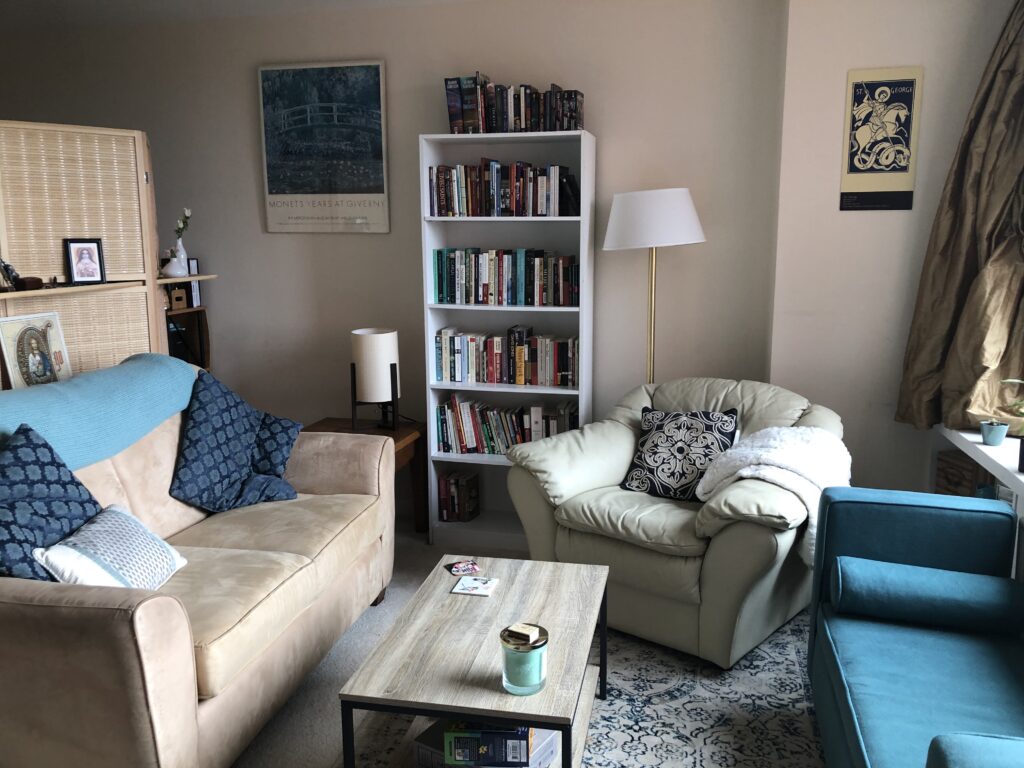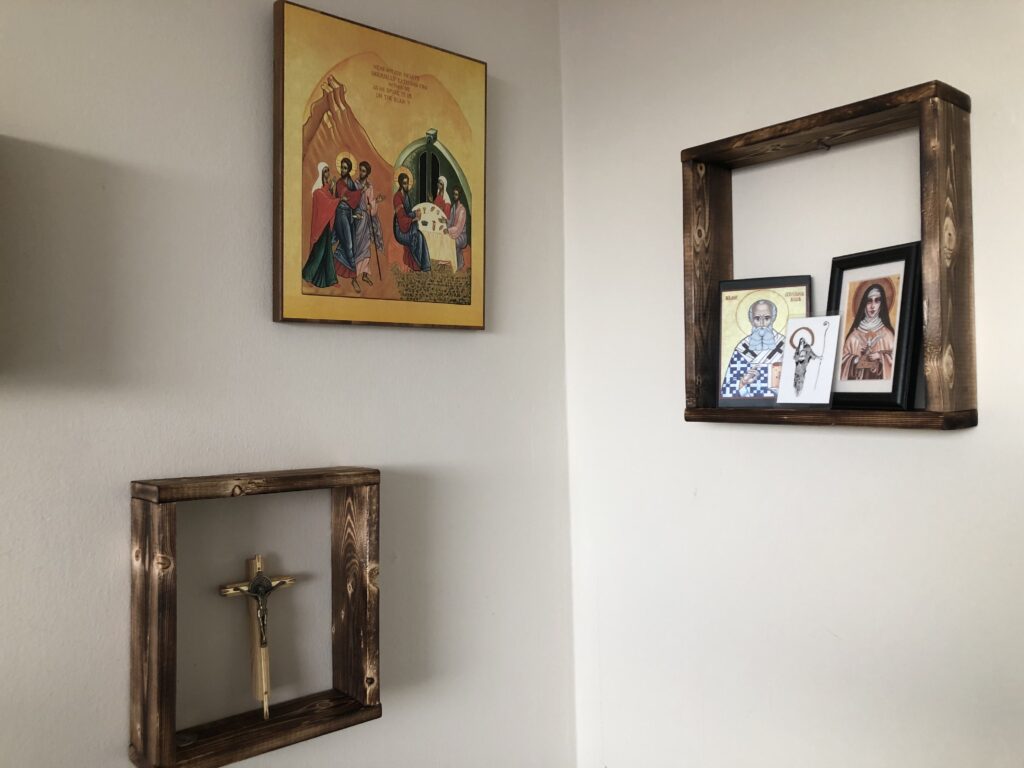
I love creating beautiful spaces. Though I am certainly no interior decorator, I love making comfortable spaces for conversation and community to take place when my husband and I host friends and family. So, I spend a lot of time looking for pieces that will light up our home (on our small budget!). Our living room features a tall white bookshelf, blue throw blankets, and a Monet print in blues and greens. At my school office, I put up art prints and Gerard Manley Hopkins poems. I stack my books just so.
I’m certainly not alone in wanting to make the places in which I live and work aesthetically pleasing; our broader culture is obsessed with interior design, and social media especially focuses on visual beauty. Minimalism ala Marie Kondo fills my Instagram feed, and I can’t help but notice pieces that would match this aesthetic. Recently: an Anthropologie mug painted with delicate flowers and a gold rim. I went out on a walk not intending to purchase anything, but I couldn’t — so I told myself — resist the mug! I love it, and I still use it every night for evening tea. But I also felt guilty.
Picture This: Using Art as a Path to the Holy Spirit
The mug incident made me aware of a growing impulse I have to cultivate my space just so. More and more often lately, I find myself craving these Instagram aesthetics: I need my evening tea in the cute mug; the apple cider candle must be lit; I have to buy that art print! Coming home to dirty dishes and a misplaced throw blanket can be the tipping point into a meltdown (as my patient husband well knows).
The intensity of these recent reactions forced me to reflect. Why do I need these things so badly? It’s not that I want the Instagram aesthetic-life just so that I can post photos on social media—though I occasionally do. But I have realized how closely my desire for certain objects mirrors the motivation of the feed: I need my life to be this way. Then I will be happy! See? Look how well I am doing, with my row of succulents in half-light! My motivation — the Insta-motivation — is for control and individual self-fulfillment above all.
HOMILY: Beautiful Dwelling Place

So, why not try to quit? Break the addiction, stop buying stuff, don’t be so materialistic! There’s a simple reason I do not want to reject the aesthetic life straight out. As a Catholic, I see the heart of the desire for beauty as essentially good. God is beauty, and any real beauty points us back to its creator. God loves us and wants us to enjoy his created world—and this can be much easier with a cup of tea in a beautiful home, than in a laundry-strewn basement.
The problem with Instagram aesthetics is that they aren’t real. They capture one snapshot from a certain angle, or a three-second clip in the perfect lighting, to play on repeat. Those things don’t exist in the real world exactly as they appear online. I realized, with some chagrin along with the sense of clarity, that often when I am trying to achieve a certain image or mood, what I am really doing is seeking someone else’s approval, or envy; I am trying to satisfy my own pride.
Theologically, I know that beauty is good because it reflects the reality of Christ.
RELATED: Does It Spark Joy? Applying Marie Kondo’s Lessons to My Spiritual Life
For instance, when I spend 20 minutes before a friend comes over trying to arrange my coffee table decor or my bedroom furniture in a the perfect way — or if I do this for a social media post — I know that I am doing it to make myself look good, not because I am seeking perfection for Jesus’s sake.
So, unsettled by my own dependence on material beauty, I’ve started to ask myself: How do I, as a Catholic, make beautiful spaces in my life for the sake of Christ, and not for the feed?
When I asked myself those questions, here is what I found.

Pray as often as I beautify.
First and foremost, I need to make sure I am making time for prayer in my day. The perfect candle will do nothing for my well-being if I don’t also take the time to sit with God. The void I am trying to fill with Monet and organic tea can only truly be filled by Christ. I have started praying specifically while I am looking for items to make my space beautiful! To make sure I am really fashioning these spaces as a co-creator with God.
Incorporate sacred artwork I’m drawn to.
I want to make it a point to include more sacred art in my home design. All beauty is to point us to Christ; why not be super obvious about it? We need all the reminders we can get that Jesus and Mary and the saints are with us in these spaces!
Make other people part of my vision.
The end goal of my aesthetic cultivation — especially when it involves spending money — should be others. I should create beautiful spaces for my community, for my friends, for my family. Not just myself. When I make a purchase, I try to ask: Who is this for, besides me? Who else will enjoy it? My other end goal should be the glorification of God’s world, as opposed to validation on my social media with lots of likes and comments.
Originally published on July 7, 2021